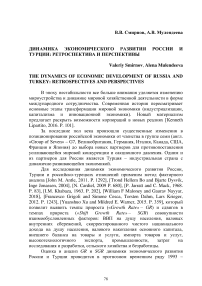Динамика экономического развития России и Турции: ретроспектива и перспективы
Автор: Смирнов Валерий Владиславович, Мулендеева Алена Владимировна
Журнал: Экономический журнал @economicarggu
Статья в выпуске: 4 (48), 2017 года.
Бесплатный доступ
Предметом изучения является динамика экономического развития России, Турции и российско-турецких отношений. В статье проведен ретроспективный и перспективный анализ динамики темпов прироста и сдвигов в темпах прироста совокупности взаимообусловленных факторов: ВВП, валовых внутренних сбережений, скорректированного чистого национального дохода, валового накопления основного капитала, внешнего баланса на товары и услуги, импорта товаров и услуг, высокотехнологичного экспорта, промышленности, затрат на исследования и разработки, сельского хозяйства и безработицы. Оценка и анализ динамики темпов прироста и сдвигов в темпах прироста экономического развития России и Турции проводится в прогнозном временном ряду 1993 - 2020 гг., с использованием линейной аппроксимацией по методу наименьших квадратов. Источником для исследования являются данные Всемирного банка. В результате исследования выявлены ретроспективные и перспективные преимущества России и Турции в российско-турецких отношениях. Показана необходимость группировки положительных и отрицательных сдвигов темпов прироста для обеспечения равноправного российско-турецкого сотрудничества. Для устранения сдвигов темпов прироста в российско-турецких отношениях необходимо повысить инновационную активность России и Турции на перспективу, а также усилить политическое и экономическое сотрудничество.
Анализ, динамика, международное сотрудничество, потенциал, развитие, сдвиги, темпы прироста
Короткий адрес: https://sciup.org/14915329
IDR: 14915329
Текст научной статьи Динамика экономического развития России и Турции: ретроспектива и перспективы
URL: (Дата обращения 12.04.2018).
URL: (Дата обращения 12.04.2018).
URL: (Дата обращения 12.04.2018).
URL: (Дата обращения 12.04.2018).
|
Временной период |
Промышленность, добавленная стоимость (% ВВП) |
Затраты на исследования и разработки (% от ВВП) |
Сельское хозяйство, добавленная стоимость (% ВВП) |
Безработица, всего (% от общей рабочей силы) (методу МОТ) |
||||
|
Турция |
Россия |
Турция |
Россия |
Турция |
Россия |
Турция |
Россия |
|
|
2008 |
-1,29 |
-0,89 |
0,31 |
-6,62 |
-0,91 |
-0,17 |
8,99 |
3,33 |
|
2009 |
-8,47 |
-6,86 |
17,08 |
19,97 |
8,44 |
6,40 |
29,90 |
33,87 |
|
2010 |
3,73 |
3,14 |
-0,72 |
-9,72 |
12,61 |
-17,45 |
-15,08 |
-12,05 |
|
2011 |
9,43 |
-2,40 |
1,84 |
-9,55 |
-8,81 |
1,33 |
-17,76 |
-10,96 |
|
2012 |
-0,93 |
-0,18 |
7,21 |
2,31 |
-6,17 |
-5,65 |
-7,95 |
-15,38 |
|
2013 |
4,22 |
-4,46 |
2,53 |
0,95 |
-12,60 |
-2,12 |
7,41 |
0,00 |
|
2014 |
0,83 |
-0,69 |
6,62 |
3,02 |
-2,95 |
12,37 |
13,79 |
-5,45 |
|
2015 |
-0,66 |
2,24 |
3,32 |
4,05 |
5,15 |
12,09 |
3,03 |
7,69 |
|
2016 |
0,98 |
-1,12 |
3,68 |
2,56 |
-10,44 |
4,00 |
5,88 |
-1,79 |
|
2017 |
-1,69 |
-3,02 |
3,94 |
2,31 |
-2,12 |
-10,30 |
0,38 |
0,95 |
|
2018 |
-1,49 |
-2,81 |
4,12 |
2,12 |
-2,23 |
-9,39 |
0,60 |
0,66 |
|
2019 |
-1,32 |
-2,64 |
4,27 |
1,98 |
-2,31 |
-8,65 |
0,78 |
0,43 |
|
2020 |
-1,19 |
-2,51 |
4,37 |
1,87 |
-2,38 |
-8,06 |
0,92 |
0,25 |
|
SCR 1993-2020 |
0,27 |
0,17 |
0,02 |
-0,04 |
-0,03 |
0,11 |
0,02 |
-0,02 |
∆ GR , с преобладанием России, выделяются следующие периоды и их положительные значения, а также SCR 1993-2020 (рис. 3):
-
- по промышленности (добавленная стоимость (% ВВП)): ∆ GR 1993 = 7,6, ∆ GR 1996 = 9,67 , ∆ GR 1999 = 7,51, ∆ GR 2000 = 5,47, ∆ GR 2004 = 10,07, ∆ GR 2005 = 4,06, ∆ GR 2008 = 0,4, ∆ GR 2009 = 1,6, ∆ GR 2012 = 0,75, ∆ GR 2015 = 2,9 и ∆ SCR 1993- 2020 - ,за; тратам на исследования и разработки (% от ВВП): ∆ GR 1998 = 15,83, ∆ GR 2000 = 2,62 , ∆ GR 2002 = 8,33, ∆ GR 2003 = 11,25, ∆ GR 2006 = 2,26, ∆ GR 2009 = 2,88, ∆ GR 2015 = 0,73 и ∆ SCR 1993-2020 = -0,05;
-
- сельскому хозяйству (добавленная стоимость (% ВВП)): ∆ GR 1993 = 9,12, ∆ GR 1995 = 6,36 , ∆ GR 1997 = 3,74, ∆ GR 1999 = 45,36, ∆ GR 2001 = 14,22, ∆ GR 2003 = 2,36, ∆ GR 2006 = 3,02, ∆ GR 2007 = 6,60, ∆ GR 2008 = 0,75, ∆ GR 2011 = 10,14, ∆ GR 2012 = 0,52, ∆ GR 2013 = 10,48, ∆ GR 2014 = 15,31, ∆ GR 2015 = 6,94, ∆ GR 2016 = 14,44 и ∆ SCR 1993-2020 = 0,14;
-
- безработице ((всего (% от общей рабочей силы) (по методу МОТ)): ∆ GR 1993 = 7,58, ∆ GR 1994 = 41,73 , ∆ GR 1995 = 27,68, ∆ GR 1996 = 16,35, ∆ GR 1997 = 18,62, ∆ GR 1998 = 11,24, ∆ GR 2003 = 2,84, ∆ GR 2006 = 17,92, ∆ GR 2009 = 3,97, ∆ GR 2010 = 3,03, ∆ GR 2011 = 6,8, ∆ GR 2015 = 4,66, ∆ GR 2017 = 0,57 и ∆ SCR 1993-2020 = -0,04.
Следует выделить (см. рис. 3):
-
- положительный момент – существенное снижение ∆ GR безработицы (всего (% от общей рабочей силы) (по методу МОТ)): ∆ GR 2001 = -44,33 (Россия GR 2001 = -15,09, Турция GR 2001 = 29,23), ∆ GR 2002 = -36,03 (Россия GR 2002 = -12,22, Турция GR 2002 = 23,81);
-
- отрицательный – затрат на исследования и разработки ∆ GR 1999 = -21,06, ∆ GR 2004 = -17,73, ∆ GR 2005 = -21,36, ∆ GR 2007 = -20,37, ∆ GR 2011 = -11,39.
\
-•х у \ \
/\
-10
-20
-30
-40
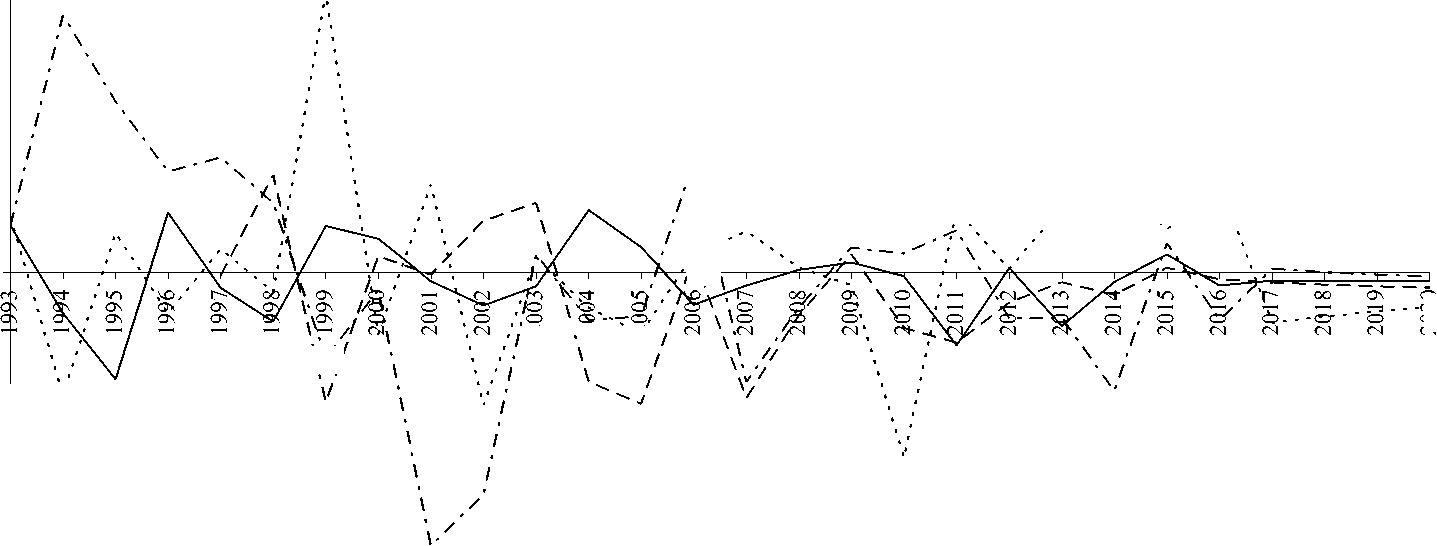
Cl________\СІ__________С.|
W# \ /
-50
Промышленность, добавленная стоимость (% ВВП) ^^^ ^^^ ^^^ Затраты на исследования и разработки (% от ВВП)
Сельское хозяйство, добавленная стоимость (% ВВП) ^^^ ■ ^^^ ■ Безработица, всего (% от общей рабочей силы) (по методу МОТ)
Рисунок 3. ∆ GR по промышленности (добавленная стоимость (% ВВП)), затрат на исследования и разработки (% от ВВП), сельского хозяйства (добавленная стоимость (% ВВП)), безработицы (всего (% от общей рабочей силы) (по методу МОТ))1
Использование потенциала SGR и ∆GR динамики экономического развития российско-турецких отношений.
В современных экономических условиях использование потенциала российско-турецких отношений возможно в трех направлениях с доминированием российской (рис. 1) и турецкой экономики (2), либо равноправным сотрудничеством (рис. 3).

Инфляция, дефлятор ВВП

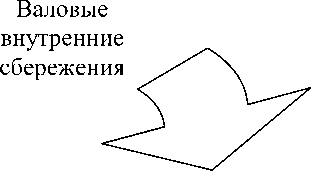
Скорректированн ый чистый национальный

Рисунок 1. Российско-турецкие отношения с доминированием российской экономики.
Экономика России может стать лидером в российско-турецких отношениях GR 2018-2020 и SCR 1993-2020 (рис. 1): валовые внутренние сбережения ( GR 2018 = 1,55, GR 2019 = 1,42, GR 2020 =1,32 и SCR 1993-2020 = -0,01); скорректированный чистый национальный доход на душу населения ( GR 2018 = 7,79, GR 2019 = 7,96, GR 2020 =8,1 и SCR 1993-2020 = 0,01); внешний баланс на товары и услуги ( GR 2018 = 548,88, GR 2019 = 503,61, GR 2020 =466,91 и SCR 1993-2020 = 0); импорт товаров и услуг ( GR 2018 = 19,49, GR 2019 = 17,82, GR 2020 = 16,46 и SCR 1993-2020 = -0,02); инфляция, дефлятор ВВП ( GR 2018 = 207,54, GR 2019 = 191,83, GR 2020 = 179,19 и SCR 1993-2020 = -0,01).
ВВП на душу
Безработица населения
Валовое накопление основного капитала
Сельское хозяйство
Высокотехно логичный экспорт
Затраты на исследования и разработки
Промышленн ость
Рисунок 2. Российско-турецкие отношения с доминированием турецкой экономики
Турецкая экономика может стать лидером в российско-турецких отношениях GR 2018-2020 и SCR 1993-2020 (рис. 2): ВВП на душу населения (в текущих ценах US $) ( GR 2018 = 11,72, GR 2019 = 11,24, GR 2020 =10,86 и SCR 1993-2020 = -0,04); валовое накопление основного капитала (% от ВВП) ( GR 2018 = 0,48, GR 2019 = 0,59, GR 2020 =0,68 и SCR 1993-2020 = 0,04), высокотехнологичный экспорт (% промышленного экспорта) ( GR 2018 = 12,42, GR 2019 = 11,18, GR 2020 = 10,23 и SCR 1993-2020 = -0,03), промышленность (добавленная стоимость (% ВВП)) ( GR 2018 = -1,49, GR 2019 = -1,32, GR 2020 = -1,19 и SCR 1993-2020 = 0,27); затраты на исследования и разработки (% от ВВП) ( GR 2018 = 4,12, GR 2019 = 4,27, GR 2020 = 4,37 и SCR 1993-2020 = 0,02); сельское хозяйство, добавленная стоимость (% ВВП) ( GR 2018 = -2,23, GR 2019 = -2,31, GR 2020 = -2,38 и SCR 1993-2020 = -0,03; безработица (всего (% от общей рабочей силы) (по методу МОТ)) ( GR 2018 = 0,6, GR 2019 = 0,78, GR 2020 = 0,92 и SCR 1993-2020 = 0,02).
капитала
Валовое накопление основного
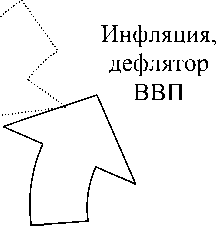
Импорт товаров и услуг
ВВП на душу населения
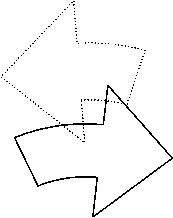
Безработица
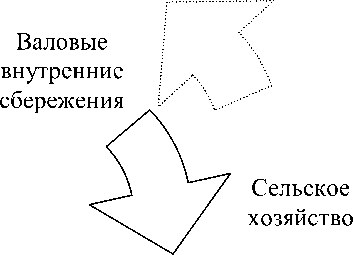
Скорректир ованный чистый
национальн
Высокотехно логичный экспорт

товары и услуги
Внешний баланс на

Затраты на исследования и разработки
Промышленн ость
Рисунок 3. Равноправное российско-турецкое сотрудничество
Для обеспечения равноправного сотрудничества необходимо устранить ∆ SCR 1993-2020 внешнего и внутреннего контура (рис. 3): ВВП на душу населения (∆ SCR 1993-2020 = 0,07), валовым внутренним сбережениям (∆ SCR 1993-2020 = -0,06), валовым накоплениям основного капитала (∆ SCR 1993-2020 =0,17), импорту товаров и услуг (∆ SCR 1993-2020 = 0,05), высокотехнологичному экспорту (∆ SCR 1993-2020 = 0,02), промышленности (∆ SCR 1993-2020 = -0,1), затратам на исследования и разработки (∆ SCR 1993-2020 = -0,05), сельскому хозяйству (∆ SCR 1993-2020 = 0,14), безработице (∆ SCR 1993-2020 = -0,04).
Для устранения ∆SCR1993-2020 необходимо группировать положительные отклонения для России: ВВП на душу населения (∆SCR1993-2020 = 0,07), валовые накопления основного капитала (∆SCR1993-2020 = 0,17), импорт товаров и услуг (∆SCR1993-2020 = 0,05), высокотехнологичный экспорт (∆SCR1993-2020 = 0,02) и сельское хозяйство (∆SCR1993-2020 = 0,14), а также отрицательные – валовые внутренние сбережения (∆SCR1993-2020 = -0,06), промышленность (∆SCR1993-2020 = -0,1), затраты на исследования и разработки (∆SCR1993-2020 = -0,05), безработице (∆SCR1993-2020 = -0,04).
Основным препятствием для устранения ∆ SCR 1993-2020 в российско-турецких отношениях является низкая инновационная активность России и Турции, рассматривающие короткие временные горизонты развития экономики. Научные открытия и технологические инновации, требующие долгосрочных обязательств и инвестиций страдают от компенсационных расходов для людей и секторов, подверженных риску [So Young Kim, 2014. P. 107]), снижая реальные валовые внутренние сбережения.
Новые реалии мировой экономики тесно связаны с эмпирическими и теоретическими разработками, которые в значительной степени сосредоточены на вопросах, связанных с инновациями [Philip McCann and Raquel Ortega-Argiles, 2013. P. 187]. На каждом этапе экономический рост следует за траекторией распространения инноваций [John Foster, 2016. P. 871] и эмпирический фокус исследований смещается от производства к услугам [Ben R. Martin, 2016. P. 432]. При этом диалог знаний является лучшей моделью для реализации инновационной политики в регионах и странах, способствующих преодолению неравенства между развитыми и развивающимися странами [Christopher B. Anderson and Adrian Monjeau, Jaime R. Rau, 2015. P. 709].
Трансформации, связанные с разрушительными событиями, вызывают сдвиг в деятельности по планированию будущих технологий от отдельных широкомасштабных прогнозных действий до небольших внутренних движений, а также наращивание потенциала [K. Matthias Weber and Jennifer Cassingena Harper, Totti Könnola, Vicente Carabias Barcelo, 2012. P. 153]. Ожесточенная конкуренция и низкий спрос на продукцию могут усилить инновации и повысить производительность в фирмах [Lennart Erixon, 2016. P. 93], а сотрудничество может повысить производительность труда в несколько раз [Luca Berchicci and Jeroen P. J. de Jong, Mark Freel, 2016. P. 429]. При этом, динамика капитализма все большее внимание уделяет передаче инновационных парадигм [Christoph Deutschmann, 2011. P. 83].
Немногие страны в мире увеличили свои расходы на инновации так же быстро, как Россия в последние годы. Политика России в области инноваций не является идеальной и в большей мере схожа с китайской, которая обусловлена рядом противоречий: несогласованные цели исследования, ориентированные на миссию и совершенствование, доминируют над задачами; создание институтов, формирование потенциала и распространения; процесс определения приоритетов исследований характеризуется сочетанием принятия решений по основным целям - сверху вниз, а процесса децентрализации, обсуждения и консультаций с заинтересованными сторонами - снизу вверх [Mats Benner and Li Liu, Sylvia Schwaag Serger, 2012. P. 258]. Китайскую политику развития местных технологий активно в начале двадцать первого века стали применять не только Россия (университетская реформа, развитие кластеров и повышение производительности государственных предприятий, нанотехнологий) [Evgeny A. Klochikhin, 2013. P. 657], но и Индия (нанотехнологии [Koen Beumer and Sujit Bhattacharya, 2013. P. 628]). При этом для России процесс развития местных технологий, в большей мере, связан с приватизацией государственной собственности и особым вниманием «частных фирм» к новым областям исследований [Saul Estrin and Adeline Pelletier, 2018. P. 65].
Для России в сотрудничестве с Турцией необходимо уделить вопросам снижения импорта товаров и услуг, наращиванию высокотехнологичного экспорта, развитию сельского хозяйства. Нельзя допустить, чтобы это сотрудничество превратилось в «зомби». «Зомби» продолжает действовать, но без какого-либо прогресса в направлении их мандатов в мироустройстве [Julia Gray, 2018. P. 1]. Высокотехнологическое российско-турецкое сотрудничество должно быть ориентировано на освоение космоса в рамках «Договора по космосу», «Договора о запрещении испытаний», Устава ООН [Francis Grimal and Jae Sundaram, 2018], что позволит выровнять ∆ SCR 1993-2020 промышленности, затрат на исследования и разработки и безработице.
Особой составляющей российско-турецкого сотрудничества должно стать усиление политических, экономических, социальных отношений, не включая другие страны, не размывая общий потенциал. Естественно в этом формате могут обостриться проблемы неравенства доходов и политики перераспределения [Jose Aleman, Dwayne Woods, 2018. P. 171]. Так же возможны ограничения денежно-кредитной и налогово-бюджетной политики для установления долгосрочных траекторий роста, которые можно заменить экономической стратегией на основе технологий, нацеленной на долгосрочный рост производительности [Gregory Tassey, 2013. P. 293].
Выводы. В результате исследования GR 2018-2020 и SGR 2018-2020 выявлены перспективные преимущества России в российско-турецких отношениях: валовые внутренние сбережения, скорректированный чистый национальный доход, внешний баланс на товары и услуги, импорт товаров и услуг и инфляция. Турецкая экономика может стать лидером в российско-турецких отношениях: ВВП, валовое накопление основного капитала, высокотехнологичный экспорт, промышленность, затраты на исследования и разработки, сельское хозяйство и безработица.
Для обеспечения равноправного российско-турецкого сотрудничества необходимо группировать положительные ∆ SCR 1993-2020 для России: ВВП на душу населения (∆ SCR 1993-2020 = 0,07), валовые накопления основного капитала (∆ SCR 1993-2020 = 0,17), импорт товаров и услуг
(∆ SCR 1993-2020 = 0,05), высокотехнологичный экспорт (∆ SCR 1993-2020 = 0,02) и сельское хозяйство (∆ SCR 1993-2020 = 0,14), а также отрицательные – валовые внутренние сбережения (∆ SCR 1993-2020 = -0,06), промышленность (∆ SCR 1993-2020 = -0,1), затраты на исследования и разработки (∆ SCR 1993-2020 = -0,05), безработице (∆ SCR 1993-2020 = -0,04).
Для устранения ∆ SCR 1993-2020 в российско-турецких отношениях необходимо повысить инновационную активность России и Турции на перспективу, а также усилить политическое и экономическое сотрудничество.
Список литературы Динамика экономического развития России и Турции: ретроспектива и перспективы
- Aleman, Jo., and Woods, D. (2018). A Comparative Analysis of Inequality and Redistribution in Democracies//International Studies Quarterly, vol. 62, iss. 1, pp. 171-181.
- Antle, Jo. М. (2011). Parsimonious Multi-dimensional Impact Assessment//American Journal of Agricultural Economics, vol. 93, iss. 5, pp. 1292-1311.
- Benner, M., and Liu, L., Serger, S. S. (2012). Head in the clouds and feet on the ground: Research priority setting in China//Science and Public Policy, vol. 39, iss. 2, pp. 258-270.
- Berchicci, L., and Jeroen P. J. de Jong, Freel, M. (2016). Remote collaboration and innovative perform-ance: the moderating role of R&D intensity//Industrial and Corporate Change, vol. 25, iss. 3, pp. 429-446.
- Beumer, K., and Bhattacharya, S. (2013). Emerging technologies in India: Developments, debates and si-lences about nanotechnology//Science and Public Policy, vol. 40, iss. 5, pp. 628-643.
- Bо, T. H., and Dysvik, B., Jonassen, I. (2004). LSimpute: accurate estimation of missing values in microarray data with least squares methods // Nucleic Acids Research, vol. 32, iss. 3, e34. Cardiel N. (2009). Data boundary fitting using a generalized least-squares method // Monthly Notices of the Royal Astronomical Society, vol. 396, iss. 2, pp. 680-695.
- Christopher B. Anderson, Ch. B., and Monjeau, A, Rau, Ja., R. (2015). Knowledge Dialogue to Attain Global Scientific Excellence and Broader Social Relevance//BioScience, vol. 65, iss. 7, pp. 709-717.
- Deutschmann, Ch. (2011). A pragmatist theory of capitalism//Socio-Economic Review, vol. 9, iss. 1, pp. 83-106.
- Erixon, L. (2016). Is firm renewal stimulated by negative shocks? The status of negative driving forces in Schumpeterian and Darwinian economics//Cambridge Journal of Economics, vol. 40, iss. 1, pp. 93-121.
- Estrin, S. and Pelletier, A. (2018). Privatization in Developing Countries: What Are the Lessons of Re-cent Experience?//The World Bank Research Observer, vol. 33, iss. 1, pp. 65-102.
- Factor., M. (2011). Innovation, intellectual property, and economic growth//Journal of Intellectual Property Law & Practice, vol. 6, iss. 5, pp. 347-348.
- Foster, Jo. (2016). The Australian growth miracle: an evolutionary macroeconomic explanation//Cambridge Journal of Economics, vol. 40, iss. 3, pp. 871-894.
- Galetovic, A., and Haber, St. (2017). The Fallacies of Patent-Holdup Theory//Journal of Competition Law & Economics, vol. 13, iss. 1, pp. 1-44.
- Galetovic, A., and Haber, St., Levine, R. (2015). An Empirical Examination of Patent Holdup//Journal of Competition Law & Economics, vol. 11, iss. 3, pp. 549-578.
- Gray, Ju. (2018). Life, Death, or Zombie? The Vitality of International Organizations//International Studies Quarterly, vol. 62, iss. 1, pp. 1-13.
- Grigoli, F., and Cesca, S., Dahm, T., Krieger, L. (2012). A complex linear least-squares method to derive relative and absolute orientations of seismic sensors//Geophysical Journal International, vol. 188, iss. 3, pp. 1243-1254.
- Grimal, F., and Sundaram, Ja. (2018). The Incremental Militarization of Outer Space: A Threshold Analysis//Chinese Journal of International Law, jmy006.
- Jarratt, P., and Mack, C. (1968). A least squares method for Laplace's equation with Dirichlet boundary conditions//The Computer Journal, vol. 11, iss. 1, pp. 83-87.
- Khabaza, I. M. (1963). An Iterative Least-Square Method Suitable for Solving Large Sparse Matrices//The Computer Journal, vol. 6, iss. 2, pp. 202-206.
- Kim, S. Yo. (2014). Government R&D funding in economic downturns: Testing the varieties of capitalism conjecture//Science and Public Policy, vol. 41, iss. 1, pp. 107-118.
- Klochikhin., E. A. (2013). Innovation system in transition: Opportunities for policy learning between China and Russia//Science and Public Policy, vol. 40, iss. 5, pp. 657-673.
- Lipartito, К (2016). Reassembling the Economic: New Departures in Historical Materialism//The American Historical Review, vol. 121, iss. 1, pp. 101-139.
- Maloney, W. F., and Nayyar, G. N. (2018). Industrial Policy, Information, and Government Capacity//The World Bank Research Observer, lkx006.
- Martin, B. R. (2016). Twenty challenges for innovation studies//Science and Public Policy, vol. 43, iss. 3, pp. 432-450.
- McCann, Ph., and Ortega-Argiles, R. (2013). Modern regional innovation policy//Cambridge Journal of Regions, Economy and Society, vol. 6, iss. 2, pp. 187-216.
- Tassey, G. (2013). Beyond the business cycle: The need for a technology-based growth strategy//Science and Public Policy, vol. 40, iss. 3, pp. 293-315.
- Weber, K. M., and Harper, Je. C., Konnola, T., Barcelo, V. C. (2012). Coping with a fast-changing world: Towards new systems of future-oriented technology analysis//Science and Public Policy, vol. 39, iss. 2, pp. 153-165.
- Xu, Yu., and Mildred, E. (2015). Warner. Understanding employment growth in the recession: the geographic diversity of state rescaling//Cambridge Journal of Regions, Economy and Society, vol. 8, iss. 2, pp. 359-377.

